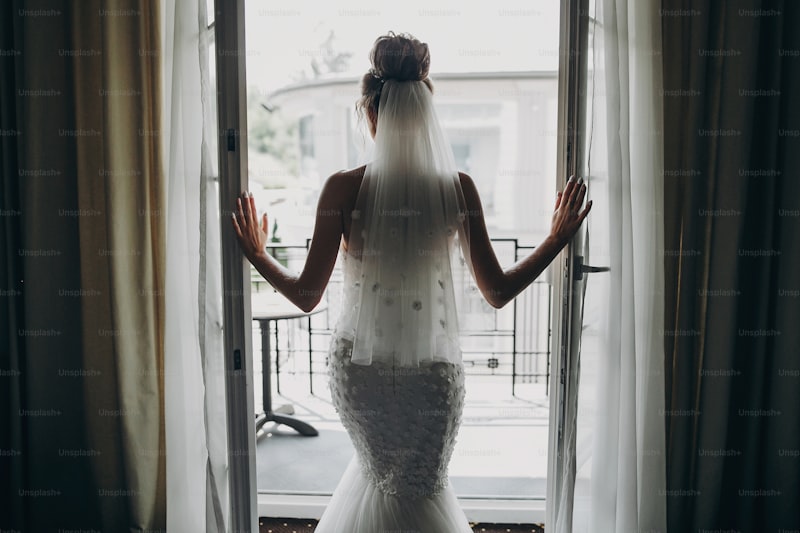Comparative Analysis of Wedding Dress Options: Finding Your Perfect Fit
Understanding the Spectrum of Wedding Dress Options
When it comes to planning a wedding, choosing the right wedding dress is often at the top of the list for many brides. With a plethora of styles, fabrics, and designers available, the decision-making process can feel overwhelming. In this article, we will explore the various options available in the market. From traditional gowns to modern alternatives, let's delve into a comparative analysis of wedding dress options to help you make an informed decision.
Types of Wedding Dresses
Wedding dresses come in numerous styles, each with its unique appeal. To provide a clearer understanding, we will categorize popular wedding dress types into several segments:
| Style | Description |
| A-Line | This style is fitted at the hips and gradually flares out, resembling the shape of an uppercase letter "A". It's universally flattering and suitable for various body types. |
| Ball Gown | Characterized by a fitted bodice and a full skirt, the ball gown is a classic choice for a fairy-tale wedding. This style exudes elegance and romance. |
| Mermaid | This style hugs the body from the chest down to the knee, then flares out. The mermaid dress is perfect for brides who wish to showcase their curves. |
| A-Frame | The A-frame dress complements most body shapes and offers a vintage-inspired look, often featuring intricate lace detailing. |
| Sheath | Offering a sleek and minimalistic silhouette, the sheath dress is ideal for brides who prefer a modern or chic aesthetic. |
Materials Matter
The fabric of a wedding dress can greatly influence not only its appearance but also its comfort and overall vibe. Here are some of the most popular materials used in wedding dresses:
| Material | Description |
| Satin | Satin gives a luxurious sheen, making it a favored choice for formal weddings. It drapes beautifully and is often used for both classic and contemporary bridal gowns. |
| Lace | This delicate fabric adds vintage charm and texture to any dress. Lace can be used as an overlay or as the main material for an ethereal look. |
| Tulle | Lightweight and airy, tulle is often used in skirts for added volume. It can create a dreamy, whimsical appearance perfect for a romantic setting. |
| Chiffon | Known for its soft, flowing qualities, chiffon works well for bohemian styles or beach weddings, offering a relaxed yet elegant feel. |
| Organza | Similar to tulle but with a more structured feel, organza adds crispness to gowns and is perfect for creating layers and volume. |
Finding Your Perfect Wedding Dress
Choosing the right wedding dress involves more than just looking at styles and fabrics. It's essential to consider your body type, wedding theme, and personal taste. Here are some key points to keep in mind:
1. Know Your Body Type
Understanding your body type is critical in selecting a dress that flatters your shape. Whether you have an hourglass figure, pear shape, or athletic build, different styles can enhance your best features. For example, A-line dresses flatter most body types, while mermaid gowns are ideal for those comfortable showcasing their curves.
2. Set a Budget
Wedding dresses can range widely in price, so it's vital to establish a budget before you start shopping. Consider not just the gown but also the cost of alterations, accessories, and cleaning. Believe it or not, some beautiful dresses can be found under $1,000, while designer gowns can go well above $10,000. Always look for sales or trunk shows, which can provide significant discounts.
3. Consider the Venue and Season
Your wedding venue and the season in which you are getting married play a crucial role in determining your dress. For outdoor summer weddings, lightweight fabrics like chiffon or tulle will keep you cool. Alternatively, if you're having a winter wedding, a ball gown with long sleeves can be both fashionable and practical.
4. Shop Early
Brides should begin the dress shopping process at least 6-9 months before the wedding date to allow ample time for ordering and alterations. This timeline helps avoid last-minute stress and ensures you find the perfect dress. Don't forget to enhance your experience by making appointments with bridal boutiques that carry styles you love.
Trendy Alternatives for Wedding Dresses
In recent years, many brides have veered from the traditional white gown, opting for trendy alternatives. Consider some of the following:
- Colored Dresses: Pastel shades, soft blues, or blush tones provide a modern take on bridal fashion.
- Jumpsuits: For the unconventional bride, stylish jumpsuits offer comfort and uniqueness, making a bold statement.
- Separates: Pairing a stylish top with a voluminous skirt lets brides mix and match fabrics and styles for a personalized look.

Conclusion
Choosing the right wedding dress is an exciting yet challenging part of wedding planning. By performing a comparative analysis of various wedding dress options, styles, and materials, brides can gain clarity, ensuring a choice that reflects their personality and makes their special day even more memorable. Remember to consider your body type, set a budget, and shop early to increase your chances of finding the dress of your dreams. Whatever your choice may be, embrace the journey toward your perfect wedding dress!
Note: Always keep an open mind and have fun while exploring different options. The right dress is not just about aesthetics; it should encapsulate your style while making you feel beautiful on your big day.